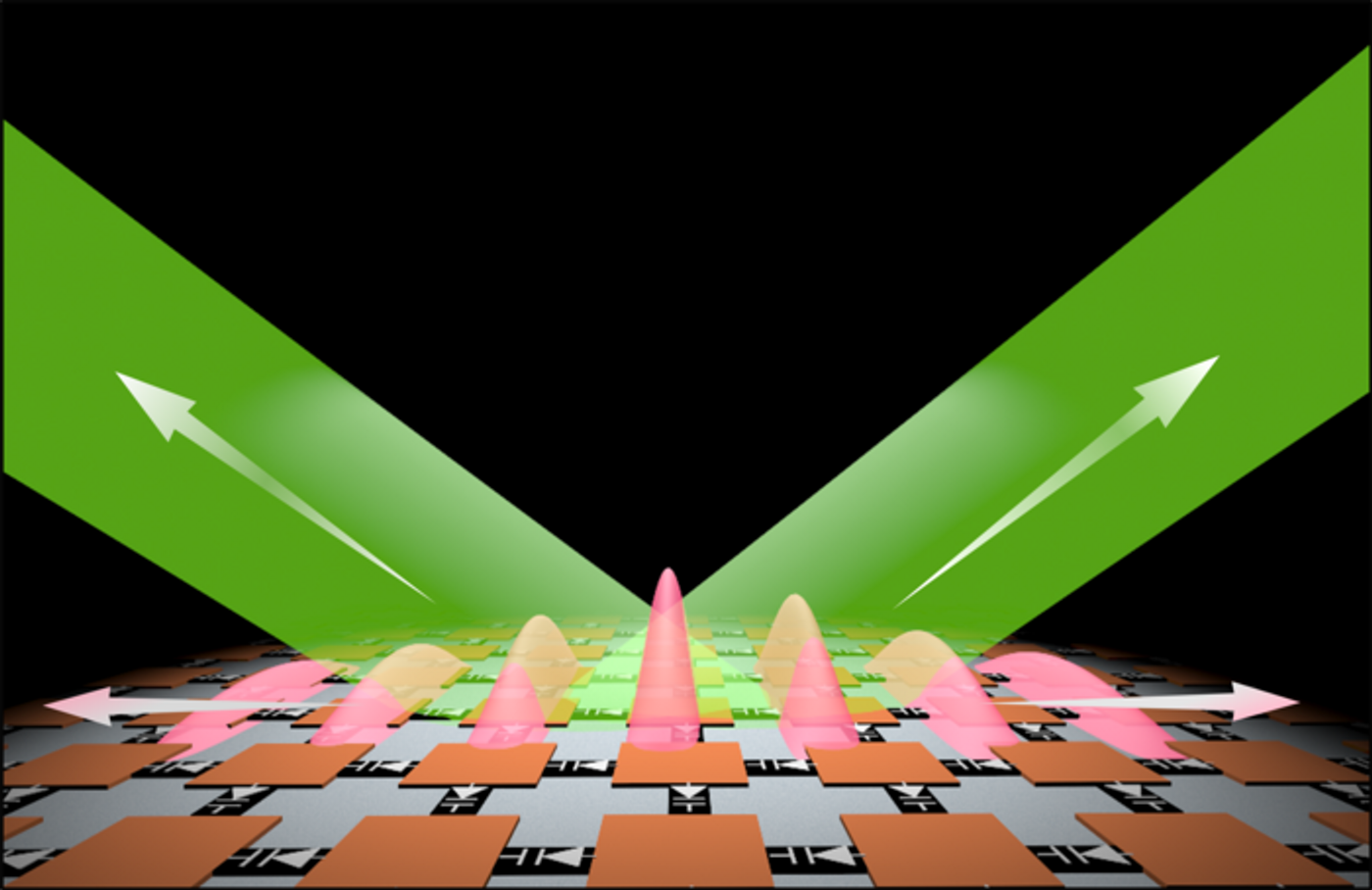New Photonic Time Crystals Could Improve Lasers and Wireless Communications
In a recent study published in Science Advances, a team of researchers have created a new method of making photonic time crystals, which is a type of artificial material capable of amplifying the light that is shined on them. This study holds the potential to improve both lasers and wireless communication.
Time crystals were first discovered 2012, and the more familiar time crystals known as mundane time crystals possess a structural pattern that repeats in only space. In contrast, and as their name implies, time crystals have possess a structural pattern that repeats in time. Until 2022, there was skepticism within the scientific community that time crystals could even exist, but research that year put those notions to bed.
Illustration of light waves being boosted by a 2D photonic time crystal. (Credit: Xuchen Wang/Aalto University)
This most recent study has succeeded in creating photonic time crystals that work at microwave frequencies while demonstrating their ability to amplify waves in the electromagnetic spectrum. While previous research has so far been focused on 3D structures, scientists have discovered a myriad of challenges associated with this method. But this current research team decided to focus on 2D structures, known as a metasurface.
“We found that reducing the dimensionality from a 3D to a 2D structure made the implementation significantly easier, which made it possible to realize photonic time crystals in reality,” said Dr. Xuchen Wang, who was a doctoral student at Aalto University for the study and is currently at the Karlsruhe Institute of Technology. This 2D approach has allowed researchers to both create and experiment with photonic time crystals.
“We demonstrated for the first time that photonic time crystals can amplify incident light with high gain,” says Wang. “In a photonic time crystal, the photons are arranged in a pattern that repeats over time. This means that the photons in the crystal are synchronized and coherent, which can lead to constructive interference and amplification of the light.”
As noted, potential applications for photonic time crystals include enhancing wireless communications by amplifying electromagnetic waves, resulting in more powerful wireless transmitters. Dr. Wang notes that the coated surfaces of 2D photonic time crystals could also help mitigate signal decay along with simplifying lase designs, as well.
“When a surface wave propagates, it suffers from material losses, and the signal strength is reduced. With 2D photonic time crystals integrated into the system, the surface wave can be amplified, and communication efficiency enhanced,” says Wang.
What new discoveries will researchers make about photonic time crystals in the coming years and decades? Only time will tell, and this is why we science!
Sources: Science Advances, EurekAlert!
As always, keep doing science & keep looking up!









